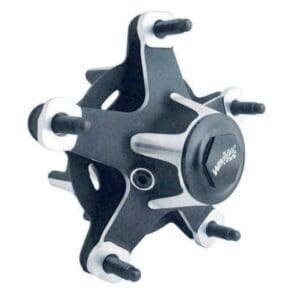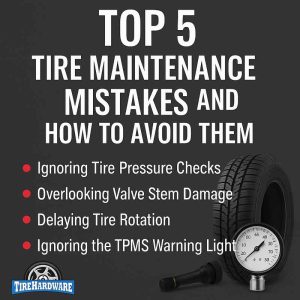Maintaining your vehicle’s valve stems is crucial for tire health and performance. Changing valve stems in and out of rims can be an intimidating proposition, however, it isn’t too complicated. Whether you have snap-in or clamp-in valve stems, replacing them without removing the tire is a straightforward process if you use the right tools, like a valve stem puller. Here’s how to do it:
Snap-In Valve Stems
Tools Needed:
- Valve stem puller
- Valve core remover
- Bead breaker
- Lubricant (soapy water or rubber lubricant)
Procedure:
- Deflate the Tire: Use the valve core remover to unscrew the valve core, releasing all the air from the tire.
- Break bead: Use a bead breaker tool to remove the tire from the bead on one side of the rim to allow access to the inside of the valve.
- Remove TPMS sensor (if equipped): Follow the instructions to remove the TPMS sensor from the stem. Most will have a clip or small screw to release it and then it simply pulls off.
- Remove the Old Valve Stem: Attach the valve stem puller on to the threads of the valve stem. Apply soapy water or another lubricant around the rim hole. Pull the stem outward until it detaches from the rim. This might require some force and it is important to pull it out as straight as possible. Using a razor to cut through the rubber on the inside of the rim hole will help it pull through easier.
- Install the New Valve Stem: Lubricate the new valve stem. Attach the threaded end of the valve stem puller to the valve stem. Thread it through the rim hole and use the puller to snap it securely into place.
- Inflate the Tire: Once securely in place, reinsert the valve core and inflate the tire to pop it back on the bead. Once back on, set to the proper air pressure.
Clamp-In Valve Stems
Tools Needed:
- Valve stem puller
- Valve core remove
- Bead breaker
- Wrench or socket for the retaining nut
Procedure:
- Deflate the Tire: Completely remove the air from the tire by taking out the valve core.
- Break bead: Use a bead breaker tool to remove the tire from the bead on one side of the rim to allow access to the inside of the valve.
- Remove TPMS sensor (if equipped): Follow the instructions to remove the TPMS sensor from the stem. Most will have a clip or small screw to release it and then it simply pulls off.
- Remove the Old Valve Stem: Loosen the retaining nut inside the rim using a wrench. Attach the valve stem puller, and pull the old stem through the rim hole.
- Install the New Valve Stem: Position the new valve stem inside the rim hole from the tire side. From the outside, screw on the retaining nut by hand first, then tighten it with a wrench. Ensure it is snug but not over-tightened.
- Inflate the Tire: Replace the valve core and inflate the tire to pop it back on the bead. Once back on, set to the proper air pressure.

Final Steps for Both Types:
- Check for Leaks: After installation, it’s vital to check for leaks. Apply soapy water around the new valve stem. Bubbles forming indicate a leak, necessitating further adjustment.
- Routine Checks: Regularly inspect your valve stems for signs of damage or wear, especially when you check your tire pressure.
Conclusion
Changing valve stems without removing the tire saves time and effort, and with the help of a valve stem puller, it becomes an even easier task. This method not only ensures that your tires are maintained with minimal hassle but also keeps you safe on the road by ensuring the integrity of your tire’s air seal.











